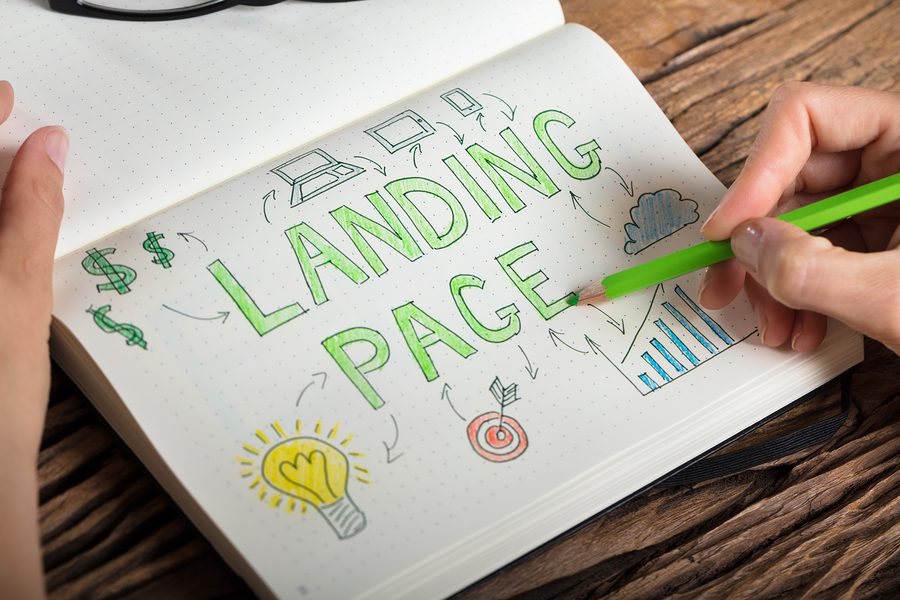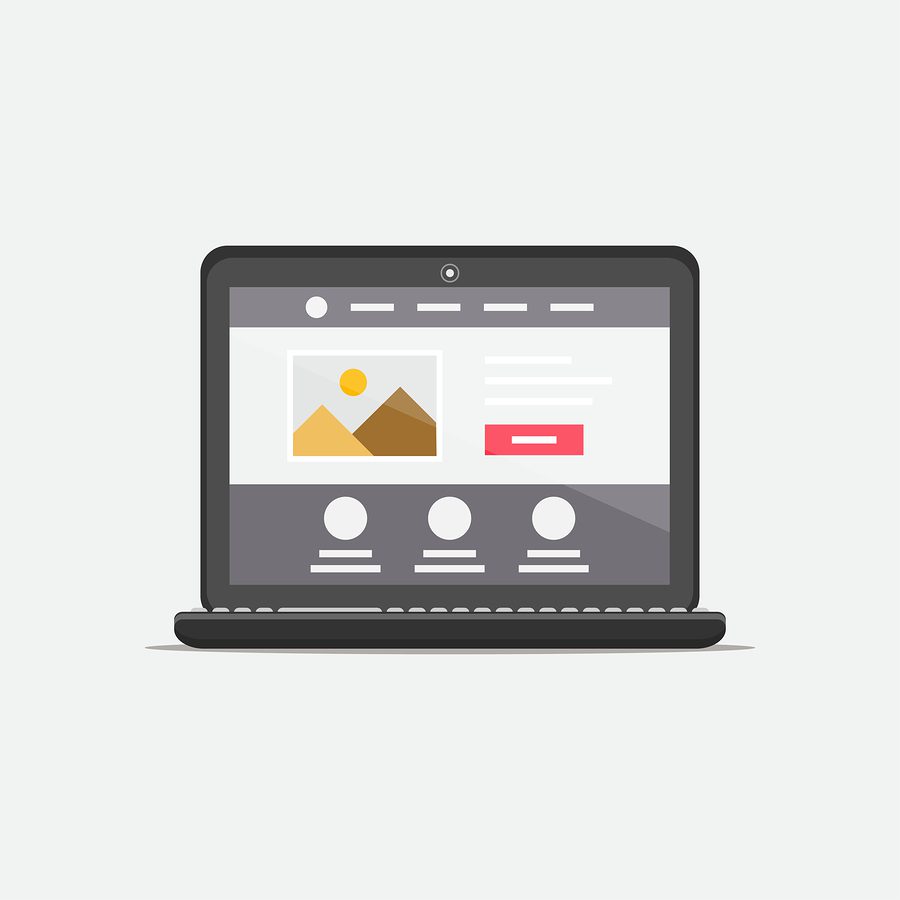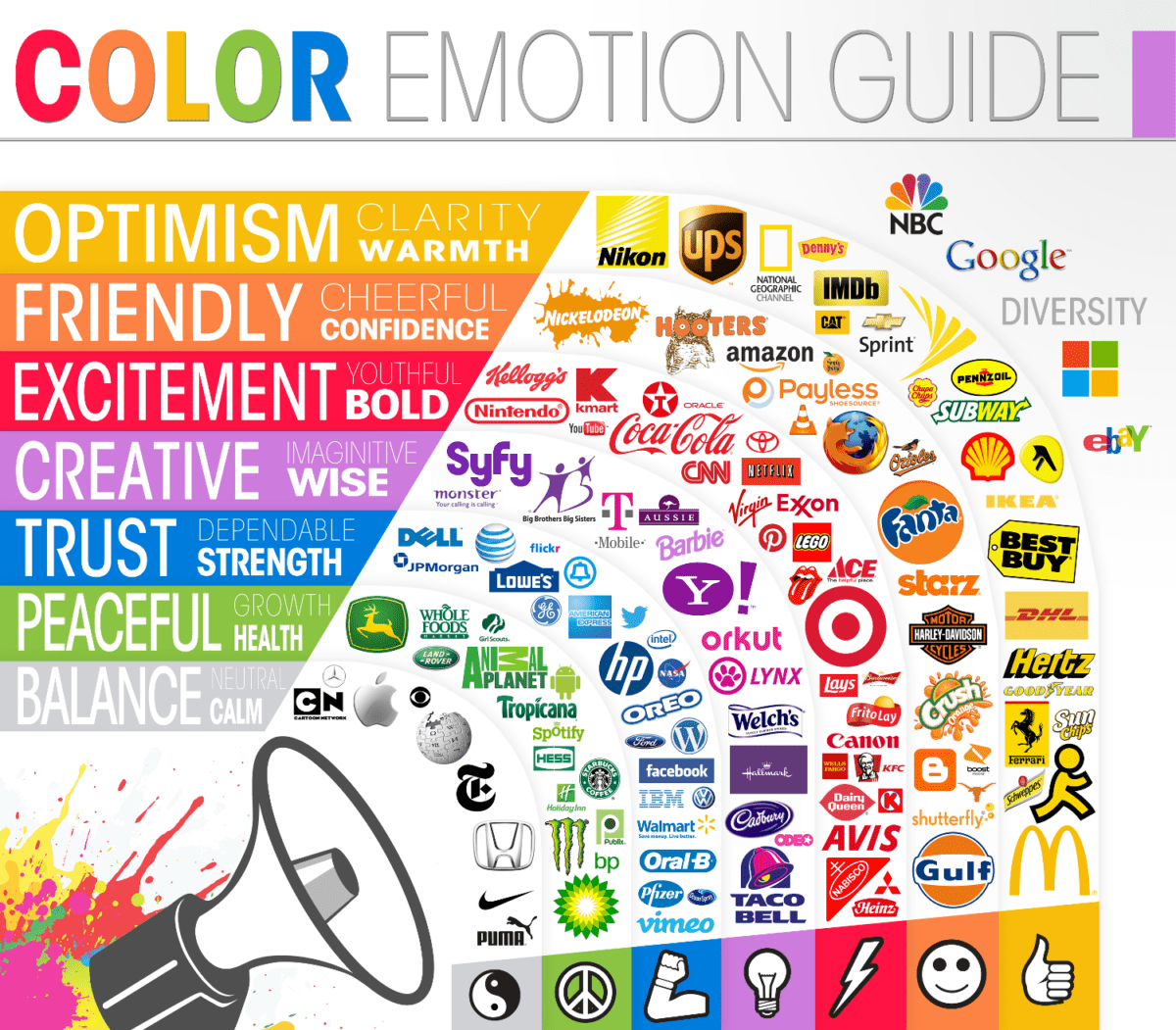
Landing pages are an important tool in the modern marketer’s toolkit. They can be used to build email lists, collect customer feedback, sell products, and for webinar and event registration. But despite being incredibly useful, 85.9% of people confess to not really understanding what they are.
In this post, we’ll attempt to clear up the confusion and explore the top tips and strategies you need to know to build an effective landing page. So hold on to your hats and sunglasses; we have a lot to cover, and we’re about to get started!
What are Landing Pages, Anyway?
A landing page is not simply the first place a person “lands” when visiting a website, though we get why someone might think that. When we refer to landing pages, we’re talking about something specific. We love the definition that Instapage uses:
“A landing page is a standalone web page, disconnected from a website’s navigation, created for the sole purpose of convincing a visitor to act (to sign up, buy, download, etc.).”
A landing page is completely separate from your website and designed for one specific purpose: to convert prospects into leads and/or customers.
Now that we understand what landing pages are (and aren’t), let’s go over how to create them.
Plan for Successful Landing Pages
Like just about everything else in life, you’ll save yourself a lot of hassle in the landing page creation process if you lay a solid foundation and plan out the project first.
One Landing Page: One Goal
Your first job is to determine the goal of your landing page. What do you want people to do when they arrive? Give you their email address or sign up for your latest webinar? Maybe you’re looking for feedback on a new product. Whatever the objective is, make sure it’s clear.
It’s also important to note that every landing page you create should only have one goal. Trying to collect email addresses, sell a new product, and register prospects for your next event will cause confusion and destroy your conversion rates.
Who is Your Audience?
In addition to goals, it’s essential to have an understanding of the type of audience that will visit your landing page. Figure out who your ideal customer is and why they’ll care about what you have to say. What specific pain points do they have that you can address?
For example, let’s say your goal is to distribute a free e-book called “Buy Your Home with No Money Down” in exchange for email addresses. You can safely assume that those who will appreciate your offer are interested in home ownership, but experiencing the “pain” of little to no extra funds for a down payment. Understanding this will help you craft content that really speaks to this specific audience and convert more visitors.
Awareness Levels
Lastly, you should be conscious of your audience’s awareness levels. An awareness level is one of five potential stages your visitors can be in when they arrive at your page.
These five stages are:
Unaware: Those who don’t yet need the solution that you provide.
Pain Aware: Those who understand they have a problem, but are not yet aware of any way to solve it.
Solution Aware: Visitors who understand their problem and need for a solution. They also know of various solutions on the market, but aren’t familiar with your specific solution.
Product Aware: At this stage, visitors know that your company offers the solution they need, but they haven’t yet chosen your product or service to help them.
Most Aware: Finally, these people are those who know and trust your brand.
Knowing the awareness level of your visitors will not only help you nail your message, but also help you determine how much content you actually need to create. If you suspect most prospects will be in either the “product aware” or “most aware” stages, you should be able to keep your content fairly short. Prospects arriving with lower levels of awareness, though, will require more content to convert.
Your Mindset
It’s important to remember that a landing page isn’t about you or your company. It’s about the reader — always. Every word you write and graphic you choose needs to speak to their problems and present your solution in an appealing way. By focusing on the reader and the benefits they’ll receive by taking the desired action, you’ll convert at a much higher rate.
Write Your Landing Page
So, you’ve planned out your landing page(s) and have a solid understanding of your goal, your audience, and your mindset. Now it’s time to dive in and write this thing!
The words you use are the most important part of the entire project. No pressure! Fortunately, getting it right won’t be hard after you read through our tips.

Message Match
Every person who lands on your page will have expectations. Make sure you match the offer and language of your content to the ads and links that will be driving traffic to it. For example, if your ad promises a free ebook, include “free ebook” or something similar in the headline. If it isn’t 100% clear to visitors that they will receive the experience they’re expecting, they won’t stick around for long and conversions will be low.
Headlines
It’s been said that on average, eight out of ten people will read the headline, but only two out of ten people will read the rest. Statements like this make it easy to see why your headline is the most important element of your landing page.
Clarity and specificity are essential to a well-crafted headline. Attention spans on the internet are microscopic and viewers won’t make time to guess at the purpose of your landing page. They need to immediately be assured, in big, bold type, that they’ve come to the right place. It’s also important to keep your headlines ultra specific. For example, which do you find more appealing:
“Tips to Stop Back Pain” or “3 Tips to Stop Back Pain”
Statements made using numbers are perceived by the human brain as more believable and therefore, more appealing — especially odd numbers like seven.
Your headline should also be benefit driven. Why should visitors opt-in to your list or register for your webinar? Because they’ll receive something valuable if they do! By including a key benefit, you’ll give visitors a reason to stick around and keep reading.
Finally, power words can be incredibly persuasive. These are words that grab attention and entice people to take action such as “discover,” “announcing,” “how to,” or “secrets.” They can help produce feelings of curiosity, urgency, and more.
Here are a few examples of great headlines:
Discover 9 Ways to Grow Your Business with Email
How to Win Every Argument With Your Spouse
The Secrets to Landing Page Success
Call-To-Action

While headlines are the most important element on your landing page, the call-to-action (CTA) is a close second. In fact, if everything else on your page is perfect, but strike out on the CTA, you won’t convert many visitors into leads and/or customers. Let’s make sure we get this part right!
First, your CTAs must be clear and specific so that visitors know exactly what they’re will get and how. It’s also important to note that each landing page should only have one CTA. Otherwise, you’ll confuse people.
Most CTAs have a form and a large button to click once the person is ready to receive the offer. Studies show that writing this button copy in the first person is more persuasive and increases conversions. For example, a button that reads “Send Me My E-Book Now” will generally convert better than “Get Your E-Book.”
Also, attempt to relieve any potential anxieties your visitors may have. A great way to do this is to include some kind of guarantee. People are more likely to give you their information and/or money if they feel like they have nothing to lose. Put visitors minds at ease with a money back guarantee if you’re selling a product or an assurance that personal information will never be shared if you’re asking for an email address.
Subheads
This is the text displayed just below the headline and typically includes more detailed and persuasive information. Surprising metrics or statements, expanded specifics on the headline’s benefit, or mention of an offer deadline can be great options for a subhead.
Additional Benefits
Besides the one mentioned in your headline, what other benefits will visitors enjoy by accepting your offer? These benefits are usually listed in a list format so they can be read quickly and easily understood.
Testimonials
How often do you buy a new product online without reading reviews first? Our guess is not very often unless the cost of the product is low. That’s because reviews help us trust a company and reassure us we’ll like the product. Testimonials on your landing page do the same thing and can help increase conversions.
Design Your Landing Page
Design plays a key role in your page’s success and, once again, message match is important. Be sure to match the look of your page, if at all possible, to your overall branding. This will limit customer confusion and assure them from the very beginning that they’ve come to the right place.
Also, pay close attention to the layout. Clutter is the enemy! Make use of white space and ensure every bit of text is easy to read. The best landing page designs are often minimal with just enough detail for an enticing offer. Let’s dive a bit deeper into a few specific design principles you need to keep in mind.

Above the Fold
This is a newspaper term that refers to the upper half of the front page. Publishers place their most important news stories in this section so that they are easily seen. Internet marketers have adopted the phrase to refer to the part of a website that can be viewed without scrolling down. Your most important and persuasive information should be in this area.
Mobile Friendly
With the continual rise of smartphone use, your landing pages need to be optimized for mobile devices. If they aren’t, you’ll miss out on an enormous (and growing) demographic! Make sure that every page you create looks and operates just as well on a smartphone as it does a computer.
Color
Studies in color psychology have linked specific colors to increased blood pressure, metabolism, and eyestrain. Crazy, right? So what does this mean in regard to your landing pages? It means the colors you choose can play a role in whether your prospects convert or not. Take a look at the chart below to see a few popular colors and the feelings they produce. Keep this in mind when you choose background and text colors.

(Source)
Your color choices may be somewhat limited by your brand, but by doing your best to adhere to this guide, you may improve your conversion rates.
Landing Page Builders
Lastly, we want to mention a few tools you can use to help design stunning landing pages. Check each of them out and pick the best platform for your needs.
Leadpages | Unbounce | Instapage | Clickfunnels
Optimize Your Landing Page
So you’ve built your first landing page and started sending traffic to it. Great job! You should be proud of what you’ve accomplished so far. But after a quick celebratory fist pump, it’s time to get back to work and start the optimization process. The best marketers know that this phase is crucial and the best landing pages are almost never created on the first try. You need to run tests to see what best connects with your audiences and drives the most conversions.
A/B and Multivariate Testing

A/B tests, also known as split tests, are a popular and relatively simple type of test that allow you to compare different types of content. By comparing one landing page to another similar, but slightly varied page, marketers are able to analyze conversion rates and use the one that gets better results.
Here’s an example: let’s say you’ve created your page with the singular purpose of capturing email addresses in exchange for free access to your new online course. Now you want to optimize it to get the highest possible conversion rate and, since you’ve read this guide and understand the importance of headlines, you decide to start there.
The “A” in your A/B test is your original landing page and is adorned with the headline, “Learn to Code in 6 Short Weeks with this Free Course!” The “B” in this test will feature a second, identical page with a different headline: “Curious About Coding? Learn How in Just 6 Weeks!” You would then drive equal amounts of traffic to each page. The one with the higher conversion rate is the winner. You can also use this process to test your CTA, colors, layout, or even a third headline idea.
Multivariate testing is similar to the A/B test we just described, but allows you to compare multiple pages and changes at the same time. And while this style of testing is more complicated, it allows you optimize landing pages faster.
What Can Be Tested?
Perhaps a better question is what can’t be? Just about everything on your landing page can be tested and optimized, but let’s focus on the few things that will create the highest conversion rate increase.
Headlines
Like we mentioned in our example, headlines can and should be optimized. Finding the right combination of words that grabs your reader’s attention and quickly keys them in to a main benefit is no easy task. So give yourself a few chances to get it right and test a few ideas against each other.
CTAs
Remember what we said earlier? After the headline, the CTA is your page’s most important element. It make sense then to do whatever we can to ensure your call-to-action really connects with page viewers. Try different button text or reduce the amount of information required on the form and see if more visitors convert.
Colors
What mood or emotion do the colors you’ve chosen produce? Do they help or harm your conversion rate? You won’t know until you test them! Background colors, button colors, text colors — change it up to see if your audience responds differently.
Layout
Finally, the way things are arranged on your page can also be optimized. Do conversion rates increase or decrease when you move the CTA to the bottom of the page instead of the top? What happens when you put testimonials in a side bar rather than below the benefit bullet points section?
Remember, just about anything on your landing page can be tested, not just the four areas we’ve mentioned here. If you’re at all suspicious that a certain aspect of your page is harming your conversion rates, run some tests and see if you can optimize it.
Keywords and SEO
So far, we’ve really only talked about optimizing your landing page for conversions. But what if you also want to increase the amount of traffic that sees your page? It’s time to consider search engine optimization (SEO.) Through the research of popular keywords in your niche and the inclusion of them in your content, you’ll increase the amount of people who find your landing page organically.
Target Better Traffic
A perfect landing page will still suffer from low conversion rates if it doesn’t get the right kind of traffic. So before we wrap up this section, we want to mention the importance of targeting your ideal prospects. Whether you use PPC ads, Facebook ads, email links, or something else, make sure that the people you’re directing toward your page are the type of people who will be interested in what you have to offer. Traffic isn’t useful; targeted traffic is.
Boom!
Whew, we made it! Now you have all the tools at your disposal to craft effective landing pages that convert and propel your business forward. Let’s recap:
- Landing pages are specific web pages with a singular purpose. They can be used to collect email addresses, gather information, sell products, and more.
- Before you do anything else, you need to develop a solid plan. Your goal, audience, and mindset should all be sorted out before you create any content.
- The words you use are incredibly important. Great landing pages have clear, benefit-driven headlines and enticing CTAs. Subheads, additional benefits lists, and testimonials can also help boost conversion rates.
- The design and layout of your page plays a critical role in its success. Avoid clutter, place important info above the fold, keep it mobile friendly, and use color strategically.
- Once you’ve created your landing page, your work isn’t done. Optimization can turn subpar pages into big winners for your company! Use A/B or multivariate testing techniques to optimize for success.
A quality landing page can do wonders for your business. What other tips do you have for building landing pages that we may have missed?
Jacob Thomas is a freelance copywriter and content marketer based in Bend, OR. His professional writing approach has helped numerous businesses gain more traffic, leads and sales. To contact Jacob, visit www.jtcopywriting.com.

